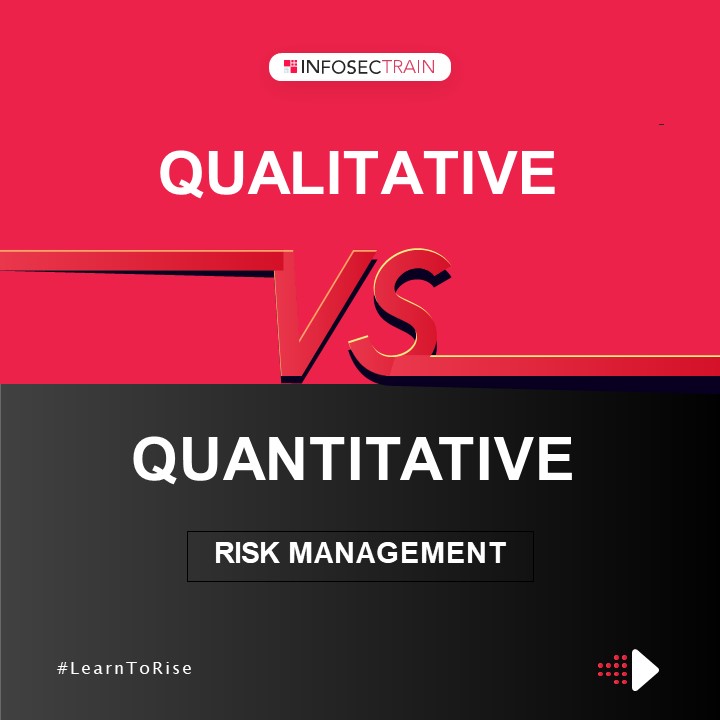Differences Between Qualitative and Quantitative Risk Management - PowerPoint PPT Presentation
Title:
Differences Between Qualitative and Quantitative Risk Management
Description:
In our comprehensive PDF, InfosecTrain delves into the dynamic interaction of Qualitative and Quantitative Risk Management. Explore nuanced strategies merging subjective insights with numerical data to enhance organizational resilience. Uncover the symbiotic relationship between these approaches, navigating the complexities of effective risk mitigation. – PowerPoint PPT presentation
Number of Views:2
Date added: 9 April 2024
Slides: 11
Provided by:
infosectrainsunny
Category:
How To, Education & Training
Tags:
Title: Differences Between Qualitative and Quantitative Risk Management
1
QUALITATIVE
QUANTITATIVE
RISK MANAGEMENT
LearnToRise
2
QUALITATIVE
RISK MANAGEMENT
www.infosectrain.com
learntorise
An approach to assessing and managing risks that
relies on subjective judgment and descriptive
analysis. It uses qualitative scales or
categories, like "low," "medium," or "high" risk,
to provide a qualitative understanding of the
risks associated with a project or
decision-making process.
3
METHODS
www.infosectrain.com
learntorise
BRAINSTORMING
Gather a group of experts and stakeholders
to generate a list of potential risks
DELPHI TECHNIQUE
Structured approach for gathering and distilling
an expert panel's opinion on potential risks
4
RISK MATRICES
www.infosectrain.com
learntorise
Risks are plotted on a matrix based on their
likelihood and impact, with categories like low,
medium, and high-risk
SWOT ANALYSIS
Strategic planning tool helps organizations
identif internal and external strengths,
weaknesses, opportunities, and threats
5
USES
www.infosectrain.com
learntorise
01
Quickly identifies and categorizes risks
Provides an initial risk assessment in the
absence of detailed data
02
03
Prioritizes risks based on subjective judgment
Helpful in making quick, high-level
decisions about risk
04
6
QUANTITATIVE
RISK MANAGEMENT
www.infosectrain.com
learntorise
A data-driven approach to assessing
and mitigating risks that involves assigning
precise numerical values to risks as well as
associated parameters like probabilities and
monetary implications. This approach uses
quantitative data and mathematical models to
quantify and analyze risks precisely.
7
METHODS
www.infosectrain.com
learntorise
MONTE CARLO SIMULATIONS
Uses random sampling to assess various scenarios
and probabilities
DECISION TREES
Constructs decision trees to map out optimal
choices and their associated risks and rewards
8
MATHEMATICAL MODELING
www.infosectrain.com
learntorise
Uses complex mathematical models to assess
risks, especially in financial engineering
domains quantitatively
9
USES
www.infosectrain.com
learntorise
Precisely quantify and analyze risks
using numerical values
01
Assess the likelihood and impact of risks in a
data-driven manner
02
Analyze complex projects and financial decisions
with precision
03
Facilitate risk comparisons and prioritize
mitigation efforts
04
10
FOUND THIS USEFUL?
To Get More Insights Through
Our FREE
Courses Workshops eBooks Checklists Mock
Tests
LIKE
SHARE
FOLLOW































